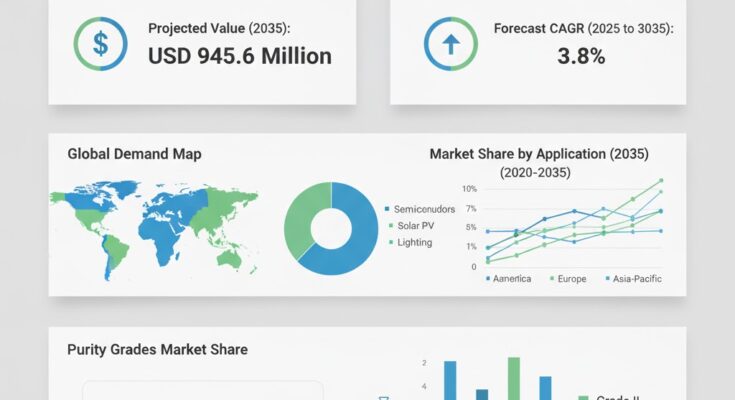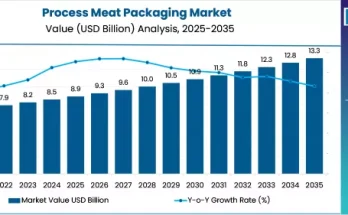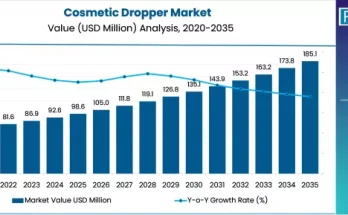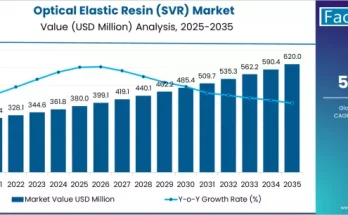The global high purity quartz sand market is poised for sustained growth, driven by the increasing demand for high-performance materials in advanced industrial applications. According to a recent report by Fact.MR, the market is projected to rise from USD 651.2 million in 2025 to USD 945.6 million by 2035, reflecting a CAGR of 3.8% over the forecast period.
High purity quartz sand (HPQS) serves as a critical raw material in the production of semiconductors, solar panels, fiber optics, and high-end glass products, where purity and consistency are essential for achieving superior performance and durability.
Strategic Market Drivers
- Growing Demand from the Semiconductor Industry
The rapid expansion of the global semiconductor industry—fueled by advancements in artificial intelligence (AI), Internet of Things (IoT), and 5G technologies—is a key driver for HPQS consumption. The material’s exceptional thermal and chemical stability makes it indispensable in the manufacture of crucibles, quartz glass tubes, and wafers used in chip fabrication.
As nations invest heavily in semiconductor production capacity to strengthen supply chain resilience, the demand for ultra-pure quartz feedstock is expected to surge globally.
- Expanding Solar Energy Sector
The transition toward renewable energy is propelling demand for HPQS in the photovoltaic (PV) industry. High purity quartz is essential for producing solar-grade silicon, a key component in solar cells.
Rising installations of solar farms, especially across China, India, and the United States, are expected to create significant opportunities for quartz sand suppliers. Continuous innovations in PV module efficiency further amplify material requirements.
- Technological Advancements and Material Refinement
Ongoing advancements in purification techniques and processing technologies have enabled producers to achieve higher purity levels (99.99% and above). These innovations are enhancing product performance, lowering impurities, and ensuring compatibility with next-generation semiconductor and optical devices.
Emerging digital quality control and process automation systems are also optimizing yields and ensuring consistent product standards across regions.
Regional Growth Highlights
East Asia: The Powerhouse of Quartz Demand
East Asia continues to dominate global HPQS consumption, led by China, Japan, and South Korea, which are major hubs for semiconductor and solar manufacturing.
China’s government-backed investments in chip production and renewable energy are expected to sustain the region’s leadership, while Japan’s precision manufacturing ecosystem ensures steady demand for ultra-pure quartz materials.
North America: Strengthening Supply Chain Independence
The U.S. is focusing on enhancing its domestic semiconductor ecosystem through the CHIPS and Science Act, which is driving local demand for high purity quartz. Strategic acquisitions and capacity expansions by North American producers are expected to reduce dependence on imports and ensure supply stability.
Europe: Focus on Renewable and Advanced Material Technologies
Europe’s strong commitment to green energy transition and advanced industrial manufacturing is supporting HPQS market growth. Countries such as Germany and Norway are investing in sustainable mining operations and advanced refining processes to meet regional and global supply demands.
Emerging Markets: Future Growth Frontiers
Regions including Latin America, the Middle East, and South Asia are witnessing rapid infrastructure and energy sector expansion. Investments in solar power generation and industrial electronics are expected to stimulate the adoption of high purity quartz sand in these developing markets.
Market Segmentation Insights
By Grade
- High Grade (≥99.99%) – Used primarily in semiconductor and photovoltaic applications.
- Medium Grade (≥99.9%) – Commonly utilized in optical glass and lighting industries.
- Low Grade (<99.9%) – Applied in ceramics, coatings, and other industrial uses.
By Application
- Semiconductors
- Solar Energy
- Optics and Lighting
- Glass Manufacturing
- Others (Metallurgy, Laboratory Equipment)
Challenges and Market Considerations
Despite positive growth prospects, the high purity quartz sand market faces several challenges:
- Resource Scarcity: Limited availability of high-grade quartz deposits increases extraction costs.
- Energy-Intensive Processing: Refining quartz to semiconductor purity requires significant energy input, affecting cost efficiency.
- Stringent Quality Requirements: The semiconductor and PV industries demand exacting standards, limiting entry for new producers.
- Geopolitical and Supply Chain Risks: Concentration of refining capacity in select regions poses potential supply disruptions.
Competitive Landscape
The HPQS market is moderately consolidated, with key players investing in vertical integration, capacity expansion, and strategic partnerships to strengthen global supply networks.
Key Companies Profiled:
- American Elements
- Nordic Mining ASA
- Creswick Quartz
- Sibelco
- Sung Rim
- Jiangsu Pacific Quartz Co. Ltd.
- The Quartz Corp.
- High Purity Quartz Sand Pty Ltd
- I-Minerals Inc.
- Australian Silica Quartz Pty Ltd
- Covia Holdings Corporation
- Mineracao Santa Rosa
- Russian Quartz LLC
- Other regional and global participants
Recent Developments
- May 2024 – Covia Holdings Corporation completed the acquisition of R.W. Sidley’s silica sand mining operation in Thompson, Ohio. The deal included quarry assets and reserves, expanding Covia’s product portfolio and strengthening its footprint in North America.
- February 2024 – Sibelco North America entered a USD 350 million partnership with Ojing Technology to supply high purity quartz sand for advanced industrial applications, reinforcing Sibelco’s market leadership and sustainability commitment.
Future Outlook: Toward a Technologically Advanced and Sustainable Supply Chain
The next decade will redefine the high purity quartz sand industry as semiconductor and solar energy sectors continue their exponential growth. Emphasis on sustainable mining, process innovation, and digital monitoring systems will be central to improving efficiency and environmental performance.
As clean energy adoption accelerates and chip manufacturing expands globally, HPQS will remain an essential material for powering the technologies of tomorrow. Companies that invest in purity enhancement, strategic regional partnerships, and eco-efficient production will lead the next phase of market evolution delivering superior-quality quartz materials for an increasingly connected and energy-conscious world.



